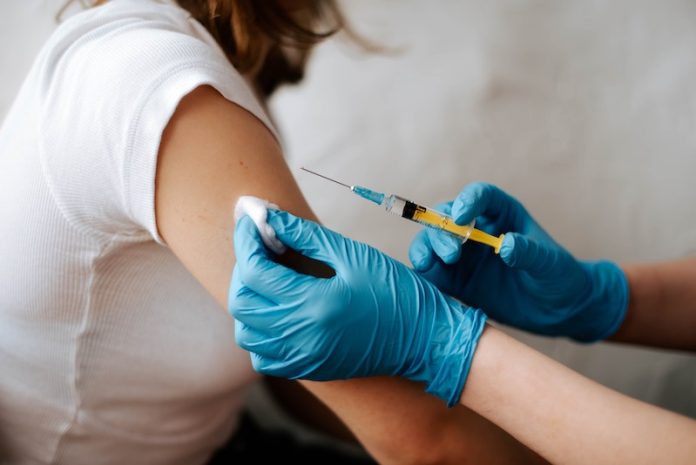
In September 2022, a new two-in-one (bivalent) COVID-19 booster shot rolled out in the United States, bringing a fresh hope in the fight against the ongoing pandemic.
However, something unexpected happened: less than 20% of people who could get the booster actually did. Researchers from the University of Arizona dove into this puzzle to find out why.
The Hesitation Behind the Booster Shot
A booster shot is like a refresher course for our immune system, reminding it how to fight the COVID-19 virus.
But despite its availability, many Americans decided to skip it, according to a paper titled “Understanding low bivalent COVID-19 booster uptake among US adults,” published in the Vaccine journal.
Elizabeth Jacobs, Ph.D., and Kristen Pogreba-Brown, Ph.D., MPH, from the Zuckerman College of Public Health, led the investigation. They and their team discovered a mix of reasons why folks were saying “no thanks” to the booster.
Interestingly, a significant chunk – nearly 40% – of the people surveyed said they skipped the booster because they’d already been infected with COVID-19 before.
They believed they were still protected, seeing no need for an extra jab.
Others (31.5%) were worried about the side effects of the shot, while some thought that the booster wouldn’t really add much to the protection they had from previous vaccinations (28.6%).
And 23.1% thought it wouldn’t shield them from getting infected at all.
Different People, Different Reasons
People’s reasons varied, and those reasons sometimes linked back to things like their age, ethnicity, or how much schooling they had.
This hints that getting more folks on board with the booster might need different strategies for different groups of people.
To understand all of this, the researchers reached out to participants of the Arizona CoVHORT study, which has been tracking the impacts of COVID-19 on Arizonans since May 2020.
They sent out questionnaires, asking whether participants had opted for the booster and, if not, why they chose to skip it.
Aiming for a Booster Boost in the Future
The researchers are hoping that uncovering these reasons will help shape efforts to get more arms receiving boosters in the future, especially as new variants of the virus keep showing up.
Dr. Jacobs emphasized that there’s a significant gap in awareness that needs addressing. Many people might not realize that even if they’ve had COVID-19, the booster can still ramp up their protection.
And as the virus changes, maintaining high protection is going to require staying up-to-date with vaccinations.
Continuing the fight against COVID-19 and its long-term impacts (like “long COVID”), the Arizona CoVHORT study, supported by a grant from the Centers for Disease Control and Prevention, is still ongoing and welcoming more participants.
In summary, while the roll-out of the bivalent booster presented an additional protective layer against COVID-19, apprehensions and misperceptions among various demographic groups curbed its widespread adoption.
Unpacking these reasons and addressing them with tailored strategies, awareness programs, and possibly adapting the booster administration plans might pave the way for higher uptake in subsequent rounds, especially as the virus continues to morph and present new challenges.
Moving forward, ensuring clear, accessible, and relatable communication about the necessity and safety of boosters will be pivotal in navigating through the subsequent phases of the pandemic.
If you care about Covid-19, please read studies about new way to prevent the common cold (and maybe COVID-19), and common diabetes drug linked to less severe COVID-19.
For more information about health, please see recent studies about COVID infection and vaccination linked to heart disease, and results showing extracts from two wild plants can inhibit COVID-19 virus.
The research findings can be found in Vaccine.
Follow us on Twitter for more articles about this topic.
Copyright © 2023 Knowridge Science Report. All rights reserved.



